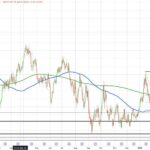
Turbulence Hits Financial Markets: Q1 2025 Review and Outlook
Tháng 4 1, 2025
Navigating the Volatile Seas of WTI Crude Oil Futures: Latest Insights & Trends
Tháng 4 1, 2025Morgan Stanley’s Insight on March US Non-Farm Payrolls: Expectations and Economic Context
In anticipation of the March US non-farm payrolls report, financial analysts and economists eagerly await insights that can significantly affect market trends and economic forecasting. As expectations build, projections suggest that an increase of 138,000 jobs may be on the horizon. This anticipated growth, although promising, comes amidst a complex backdrop of economic challenges, raising questions about the sustainability of the labor market moving forward.
Economic Context Influencing Job Growth
The US economy is currently navigating turbulent waters, primarily influenced by external factors such as tariffs and geopolitical tensions. Businesses are often hesitant to hire amid uncertainty, which may reflect in the job growth figures reported in the non-farm payrolls. The implications of ongoing trade policies and international relations, particularly those involving major trading partners, play a crucial role in shaping labor market dynamics. For instance, an analysis of China’s strategic economic moves can provide valuable context on market trends and economic situations impacting the labor market, especially amidst U.S.-China trade tensions. More information can be found on this topic at EA Trading.
Recent data, including the March ISM manufacturing index—now reported at a four-month low—is indicative of a potential economic slowdown. Such contractions are symptomatic of broader economic trends that could directly impact employer confidence and hiring practices. Furthermore, a decline in job openings signals that employers may be tightening their belts and reconsidering their staffing strategies in response to shifting economic conditions.
Implications of Economic Indicators on Payroll Projections
With the upcoming non-farm payroll report set against the backdrop of waning manufacturing activity and reduced job openings, economists are tasked with deciphering whether the projected increase in job growth will reflect a robust labor market or merely a temporary reprieve in an otherwise strained economy. The contrasting signals from various economic indicators underscore a pivotal moment for labor market analysis in the United States.
As Morgan Stanley and other financial institutions prepare their forecasts, analysts are keenly aware that the non-farm payrolls report is more than a numbers game; it is a reflection of the overarching economic landscape that shapes policymakers’ decisions and investor sentiment alike.
For a deeper understanding of the financial landscape influencing these projections, exploring extensive insights on various financial topics through platforms like EA Trading can provide clarity and depth that are essential for market participants and stakeholders.
In the coming days, as the March non-farm payrolls report is released, the dual specter of tempered job growth intertwined with economic uncertainty will inform discussions around fiscal policy and employment strategies. The significance of this report cannot be overstated, as it will not only illuminate the current state of the US labor market but will also set the tone for future economic considerations in a rapidly evolving landscape.
As investors and analysts await this crucial data, the need for an informed perspective has never been more pressing, emphasizing the importance of insightful analysis from finance experts like Morgan Stanley.
